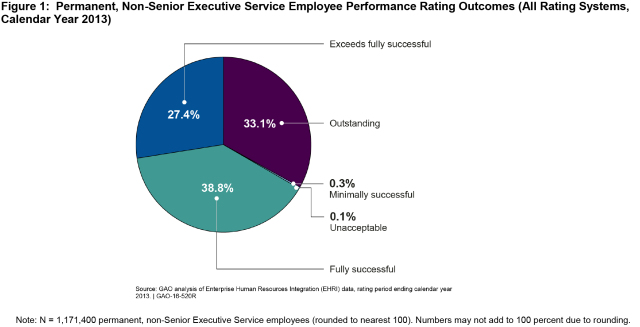Measuring Federal Employee Performance
- aligning individual performance expectations with organizational goals
- making meaningful distinctions between acceptable and outstanding performance
- appropriately rewarding employees who perform at the highest level
- addressing poor performance
- providing ongoing and relevant feedback to employees
 (Excerpted from GAO-16-520R)
(Excerpted from GAO-16-520R)
- Manage day-to-day performance by providing regular performance feedback to employees. This can be a better alternative than dismissing an employee, but supervisors aren’t always skilled at addressing employee performance issues.
- Use probationary periods to assess new employees. Probationary periods can give supervisors time to determine whether to keep an employee, but supervisors often don’t use this time to make and act on decisions based upon an employee's performance.
- Dismiss poor performers following the agency policies and processes. Those processes are more time- and resource-intensive for agencies than probationary dismissals.
- Questions on the content of this post? Contact Robert Goldenkoff at goldenkoffr@gao.gov.
- Comments on GAO’s WatchBlog? Contact blog@gao.gov.

GAO's mission is to provide Congress with fact-based, nonpartisan information that can help improve federal government performance and ensure accountability for the benefit of the American people. GAO launched its WatchBlog in January, 2014, as part of its continuing effort to reach its audiences—Congress and the American people—where they are currently looking for information.
The blog format allows GAO to provide a little more context about its work than it can offer on its other social media platforms. Posts will tie GAO work to current events and the news; show how GAO’s work is affecting agencies or legislation; highlight reports, testimonies, and issue areas where GAO does work; and provide information about GAO itself, among other things.
Please send any feedback on GAO's WatchBlog to blog@gao.gov.
